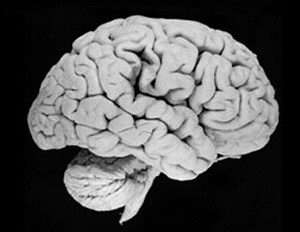The human brain is on the edge of chaos

Cambridge-based researchers provide new evidence that the human brain lives "on the edge of chaos", at a critical transition point between randomness and order. The study, published March 20 in the open-access journal PLoS Computational Biology, provides experimental data on an idea previously fraught with theoretical speculation.
Self-organized criticality (where systems spontaneously organize themselves to operate at a critical point between order and randomness), can emerge from complex interactions in many different physical systems, including avalanches, forest fires, earthquakes, and heartbeat rhythms.
According to this study, conducted by a team from the University of Cambridge, the Medical Research Council Cognition & Brain Sciences Unit, and the GlaxoSmithKline Clinical Unit Cambridge, the dynamics of human brain networks have something important in common with some superficially very different systems in nature. Computational networks showing these characteristics have also been shown to have optimal memory (data storage) and information-processing capacity. In particular, critical systems are able to respond very rapidly and extensively to minor changes in their inputs.
"Due to these characteristics, self-organized criticality is intuitively attractive as a model for brain functions such as perception and action, because it would allow us to switch quickly between mental states in order to respond to changing environmental conditions," says co-author Manfred Kitzbichler.
The researchers used state-of-the-art brain imaging techniques to measure dynamic changes in the synchronization of activity between different regions of the functional network in the human brain. Their results suggest that the brain operates in a self-organized critical state. To support this conclusion, they also investigated the synchronization of activity in computational models, and demonstrated that the dynamic profile they had found in the brain was exactly reflected in the models. Collectively, these results amount to strong evidence in favour of the idea that human brain dynamics exist at a critical point on the edge of chaos.
According to Kitzbichler, this new evidence is only a starting point. "A natural next question we plan to address in future research will be: How do measures of critical dynamics relate to cognitive performance or neuropsychiatric disorders and their treatments?"
• Join PhysOrg.com on Facebook!
• Follow PhysOrg.com on Twitter!
More information: Kitzbichler MG, Smith ML, Christensen SR, Bullmore E (2009) Broadband Criticality of Human Brain Network Synchronization. PLoS Comput Biol 5(3): e1000314. doi:10.1371/journal.pcbi.1000314, dx.plos.org/10.1371/journal.pcbi.1000314
Source: Public Library of Science (news : web)














